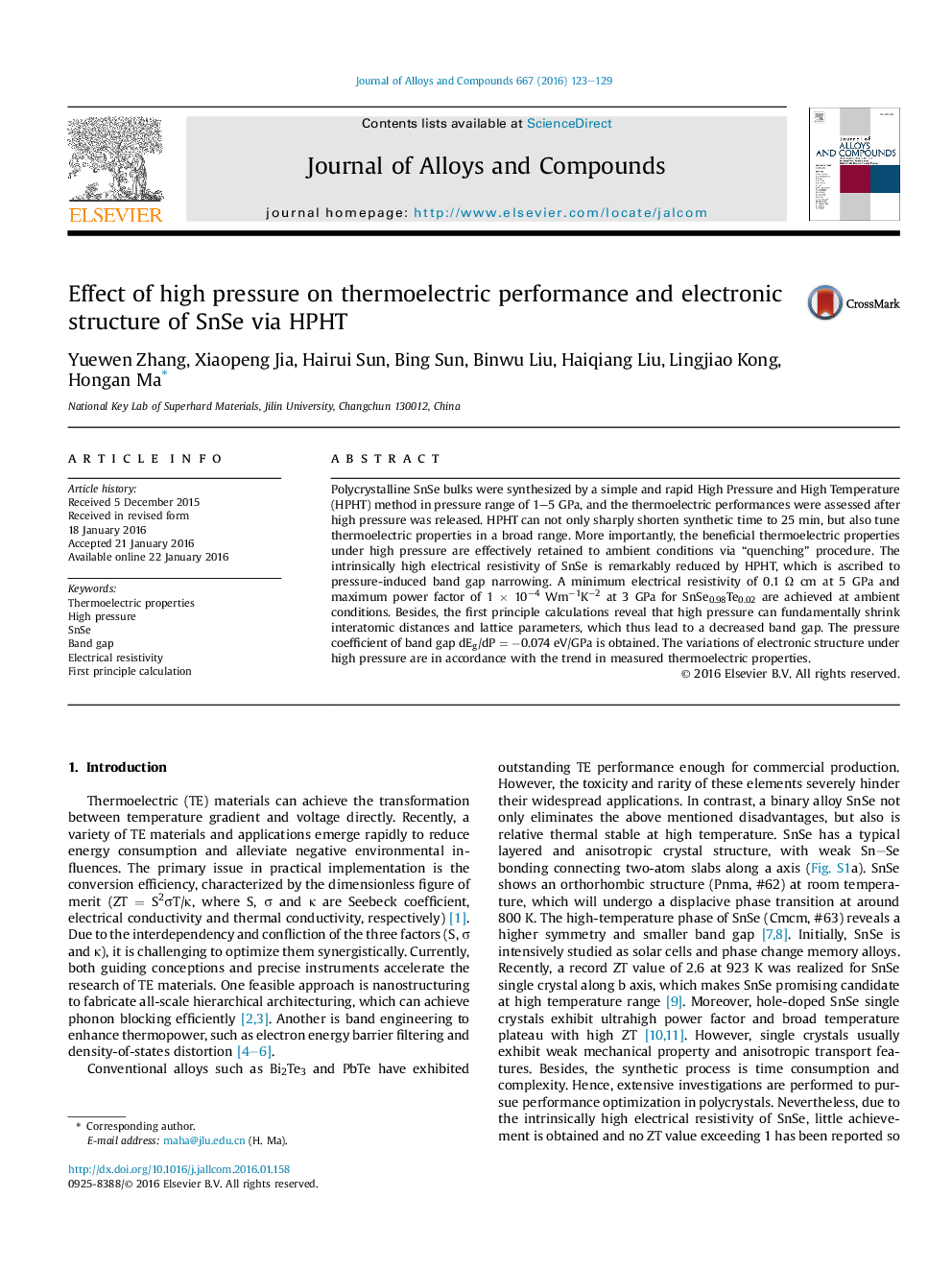| Article ID | Journal | Published Year | Pages | File Type |
|---|---|---|---|---|
| 1606558 | Journal of Alloys and Compounds | 2016 | 7 Pages |
•HPHT a simple and rapid synthetic method (from elements to bulk in 25 min).•HPHT can distinctly reduce the intrinsically high electrical resistivity of SnSe.•The high pressure effects are retained to ambient conditions.•The calculations verify the interatomic distance shrinkage and band gap narrowing.
Polycrystalline SnSe bulks were synthesized by a simple and rapid High Pressure and High Temperature (HPHT) method in pressure range of 1–5 GPa, and the thermoelectric performances were assessed after high pressure was released. HPHT can not only sharply shorten synthetic time to 25 min, but also tune thermoelectric properties in a broad range. More importantly, the beneficial thermoelectric properties under high pressure are effectively retained to ambient conditions via “quenching” procedure. The intrinsically high electrical resistivity of SnSe is remarkably reduced by HPHT, which is ascribed to pressure-induced band gap narrowing. A minimum electrical resistivity of 0.1 Ω cm at 5 GPa and maximum power factor of 1 × 10−4 Wm−1K−2 at 3 GPa for SnSe0.98Te0.02 are achieved at ambient conditions. Besides, the first principle calculations reveal that high pressure can fundamentally shrink interatomic distances and lattice parameters, which thus lead to a decreased band gap. The pressure coefficient of band gap dEg/dP = −0.074 eV/GPa is obtained. The variations of electronic structure under high pressure are in accordance with the trend in measured thermoelectric properties.
Graphical abstractFigure optionsDownload full-size imageDownload as PowerPoint slide
